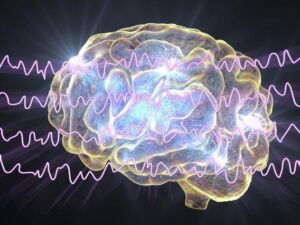 We are excited to announce we will be offering qEEG Brain Mapping and Neurostimulation with Peak Neuroccience! You can register for a special rate on the first 10 sessions if get on the waitlist before they open. You can read more about brain mapping and q-EEG below.
We are excited to announce we will be offering qEEG Brain Mapping and Neurostimulation with Peak Neuroccience! You can register for a special rate on the first 10 sessions if get on the waitlist before they open. You can read more about brain mapping and q-EEG below.
Did you enjoy this article? Checkout the podcast here: https://gettherapybirmingham.podbean.com/
Unlocking Your Brain’s Potential with Quantitative EEG (QEEG) Brain Mapping
Quantitative EEG (QEEG) brain mapping is a cutting-edge technique that provides a comprehensive electrical measurement, analysis, and quantification of your brainwaves. It creates a brain map, offering valuable insights into the functioning of your brain. At our clinic, we utilize a normative database of healthy individuals’ brainwaves of similar age and gender to compare your brain’s functionality with others, making it the first step in our assessment process for personalized brain training.
The process begins with placing a cap equipped with 20 electrodes on your head and applying saline gel to these electrodes. These electrodes pick up the electrical activity generated by your brain, which appears as unique brainwaves resembling squiggles on a page.
Our expert team then interprets the raw squiggles and runs them through advanced digitized filters using various software, which breaks them down into different brainwave bandwidths, including delta (0-4 Hz), theta (5-8 Hz), alpha (9-12 Hz), low beta (13-16 Hz), mid beta (17-25Hz), hi beta (26-40Hz), and gamma (41-70Hz).
By analyzing this data along with extensive databases of hundreds of other EEGs, we are able to identify any deviations from the norm, whether positive or negative. We not only assess the brainwaves but also evaluate their relationships, symmetry, stability, and identify any problematic signals that may manifest as symptoms or behaviors.
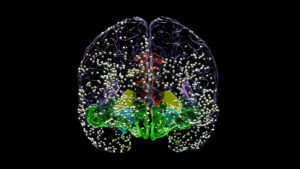 What Does the Full Brain Map Include?
What Does the Full Brain Map Include?
Our comprehensive Brain Map package includes:
Intake meeting and EEG collection
QEEG Report and metting with the mapper. You can bring your therapist or family to the mapping session if you would like.
Follow-up brain map report review and delivery of results, along with treatment recommendations.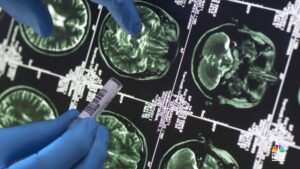
The QEEG data is then used to create a unique and customized protocol for training your brain.
The final report, which is approximately 15-30 pages long, includes a summary page, explanatory pictures, graphics, and layperson-friendly terminology while maintaining scientific accuracy.
The composition of the report involves extensive research, and takes a trained QEEG brain mapper several hours of analysis.
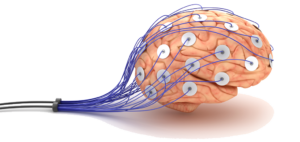 Neurostimulation
Neurostimulation
Enhance Neurofeedback Outcomes with Neurostimulation: TDCS, tACS, PEMF, and tRNS
Combining neurostimulation with neurofeedback can significantly improve the quality and speed of results compared to using neurofeedback alone. We utilize clinical-level neurostimulation techniques, including transcranial alternating current stimulation (tACS), transcranial direct current stimulation (tDCS), transcranial random noise stimulation (tRNS), and pulsed electromagnetic field stimulation (pEMF), in customized and nuanced ways to support optimal brain and body function in our clients.
Transcranial Direct Current Stimulation (tDCS)
tDCS is an effective form of electrical stimulation used to treat various conditions in the brain and body. By passing a weak one-way current through the brain using positive and negative electrodes, tDCS can inhibit overactive brain regions and enhance underactive ones. Additionally, tDCS can create an enhanced state of neuroplasticity, making the brain more receptive to learning through neurofeedback and pEMF conditioning.
Transcranial Alternating Current Stimulation (tACS)
tACS is a gentle form of electrical stimulation that uses positive (anode) and negative (cathode) electrodes to pass subtle current back and forth through the brain. Research from neurology and psychiatry has shown that when low-strength tACS is applied at specific frequencies to targeted brain regions, it can normalize and optimize brain function.
Pulsed Electromagnetic Field Stimulation (pEMF)
pEMF is an imperceptible form of stimulation that yields dynamic impacts. It involves using weak electromagnetic fields at beneficial frequencies to treat the brain or body. Although the energy cannot be felt (e.g., no vibration, heat, or sensory experience), the brain responds to the gentle energy by producing frequencies associated with health and proper brain function.
Transcranial Random Noise Stimulation (tRNS)
tRNS is a versatile form of electrical stimulation used to treat various conditions in the brain and body. This modality involves passing subtle alternating current, similar to white noise, back and forth through the brain or body at the desired frequency using positive and negative electrodes. tRNS has been shown to stabilize brain cell membranes and provide energy to neurons, allowing them to fire at appropriate times and durations.
Incorporating neurostimulation techniques such as tDCS, tACS, pEMF, and tRNS in conjunction with neurofeedback can greatly enhance the effectiveness of our treatments.
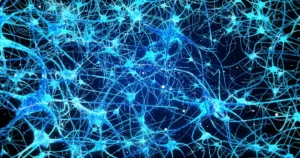 Neurofeedback
Neurofeedback
Neurofeedback is a form of therapeutic intervention that involves real-time feedback on brainwave activity. At Peak Neuroscience, we use advanced techniques such as low-resolution electromagnetic tomography (LORETA) neurofeedback and the Low Energy Neurofeedback System (LENS) to target specific brain regions for treatment. LORETA neurofeedback allows us to precisely target surface or deep brain regions, while LENS neurofeedback is quick and effective for conditions like autism, ADHD, depression, headaches, and anger. Another technique we use is heart rate variability (HRV) neurofeedback, which involves measuring heart rate while stimulating specific body regions with electromagnetic frequencies to promote proper function and healing.
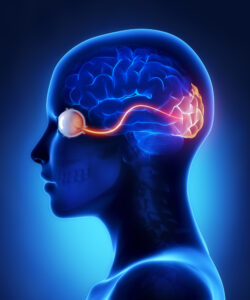 Brainspotting in conjunction with Neurostimulation and QEEG
Brainspotting in conjunction with Neurostimulation and QEEG
When it comes to neurofeedback and brain therapies, Brainspotting is a powerful technique that can be used in conjunction with neurostimulation for enhanced results. Brainspotting is a therapeutic approach that involves identifying and processing unresolved trauma or emotional issues by accessing the brain’s natural ability to heal itself. By combining Brainspotting with neurostimulation techniques, such as neurofeedback or transcranial magnetic stimulation (TMS), the therapeutic effects can be amplified.
Neurostimulation techniques, such as neurofeedback, use sensors or electromagnetic frequencies to provide real-time feedback on brainwave activity, helping individuals regulate their brain function and improve their mental well-being. Brainspotting can complement this process by helping to identify and process the root causes of emotional distress or trauma that may be affecting brainwave activity. Brainspotting involves identifying “brainspots,” which are specific eye positions that correlate with the activation of traumatic or emotional memories in the brain. By accessing these brainspots and processing the associated emotions with the guidance of a trained therapist, individuals can release unresolved emotional tension and promote healing.
Combining Brainspotting with neurostimulation techniques can offer several benefits. First, it can enhance the effectiveness of neurofeedback or other neurostimulation therapies by addressing underlying emotional issues that may be affecting brain function. By resolving emotional trauma or unresolved issues, individuals may experience improved brainwave regulation and more significant and lasting therapeutic outcomes. Additionally, Brainspotting can help individuals access and process emotions that may not be apparent through neurofeedback or other neurostimulation techniques alone, leading to deeper emotional healing and relief of symptoms.
It’s important to note that Brainspotting and neurostimulation techniques should be performed by trained and qualified professionals. The combination of these therapies should be tailored to the individual’s needs and goals, and the progress should be closely monitored by a qualified therapist to ensure safety and effectiveness.
In conclusion, combining Brainspotting with neurostimulation techniques such as neurofeedback can be a powerful approach for promoting brain and emotional healing. By addressing underlying emotional issues and regulating brainwave activity, individuals may experience enhanced therapeutic outcomes and improved mental well-being. If you’re interested in these therapies, it’s essential to seek professional guidance from qualified practitioners for safe and effective treatment.
Bibliography:
Ashton, M. (2023). Unlocking Your Brain’s Potential with Quantitative EEG (QEEG) Brain Mapping. GetTherapyBirmingham.com.
Demos, J. N. (2005). Getting Started with Neurofeedback. W.W. Norton & Company.
Gruzelier, J. H. (2014). EEG-Neurofeedback for Optimising Performance. I: A Review of Cognitive and Affective Outcome in Healthy Participants. Neuroscience & Biobehavioral Reviews, 44, 124-141. https://doi.org/10.1016/j.neubiorev.2013.09.015
Hammond, D. C. (2005). Neurofeedback Treatment of Depression and Anxiety. Journal of Adult Development, 12(2-3), 131-137. https://doi.org/10.1007/s10804-005-7029-5
Lefaucheur, J. P., Antal, A., Ayache, S. S., Benninger, D. H., Brunelin, J., Cogiamanian, F., … & Paulus, W. (2017). Evidence-Based Guidelines on the Therapeutic Use of Transcranial Direct Current Stimulation (tDCS). Clinical Neurophysiology, 128(1), 56-92. https://doi.org/10.1016/j.clinph.2016.10.087
Lipov, E., & Kelzenberg, B. (2012). Stellate Ganglion Block May Promote Neuroplasticity in PTSD: A Review of the Evidence. Journal of Trauma & Treatment, 1(4), 1-4. https://doi.org/10.4172/2167-1222.1000149
Megumi, F., Yamashita, A., Kawato, M., & Imamizu, H. (2015). Functional MRI Neurofeedback Training on Connectivity Between Two Regions Induces Long-Lasting Changes in Intrinsic Functional Network. Frontiers in Human Neuroscience, 9, 160. https://doi.org/10.3389/fnhum.2015.00160
Ros, T., Enriquez-Geppert, S., Zotev, V., Young, K. D., Wood, G., Whitfield-Gabrieli, S., … & Brandeis, D. (2020). Consensus on the Reporting and Experimental Design of Clinical and Cognitive-Behavioural Neurofeedback Studies (CRED-nf Checklist). Brain, 143(6), 1674-1685. https://doi.org/10.1093/brain/awaa009
Schabus, M., Griessenberger, H., Gnjezda, M. T., Heib, D. P., Wislowska, M., & Hoedlmoser, K. (2017). Better than Sham? A Double-Blind Placebo-Controlled Neurofeedback Study in Primary Insomnia. Brain, 140(4), 1041-1052. https://doi.org/10.1093/brain/awx011
Further Reading:
Arns, M., De Ridder, S., Strehl, U., Breteler, M., & Coenen, A. (2009). Efficacy of Neurofeedback Treatment in ADHD: the Effects on Inattention, Impulsivity and Hyperactivity: a Meta-Analysis. Clinical EEG and Neuroscience, 40(3), 180-189. https://doi.org/10.1177/155005940904000311
Fisher, C. E., Chin, L., & Klitzman, R. (2010). Defining Neuromarketing: Practices and Professional Challenges. Harvard Review of Psychiatry, 18(4), 230-237. https://doi.org/10.3109/10673229.2010.501497
Linden, D. E. (2014). Neurofeedback and Networks of Depression. Dialogues in Clinical Neuroscience, 16(1), 103.
Ros, T., Baars, B. J., Lanius, R. A., & Vuilleumier, P. (2014). Tuning Pathological Brain Oscillations with Neurofeedback: A Systems Neuroscience Framework. Frontiers in Human Neuroscience, 8, 1008. https://doi.org/10.3389/fnhum.2014.01008
Thibault, R. T., Lifshitz, M., & Raz, A. (2016). The Self-Regulating Brain and Neurofeedback: Experimental Science and Clinical Promise. Cortex, 74, 247-261. https://doi.org/10.1016/j.cortex.2015.10.024

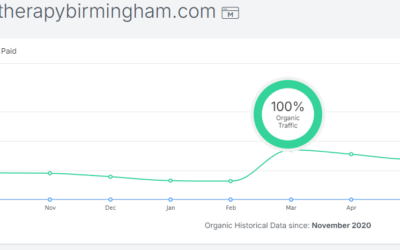


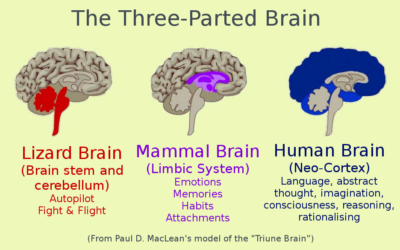



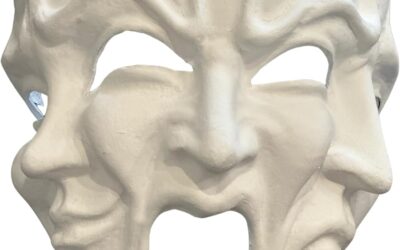
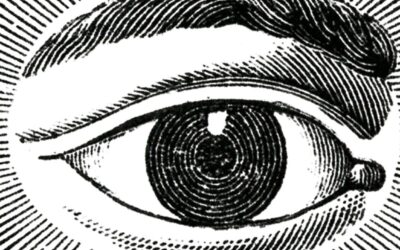








0 Comments